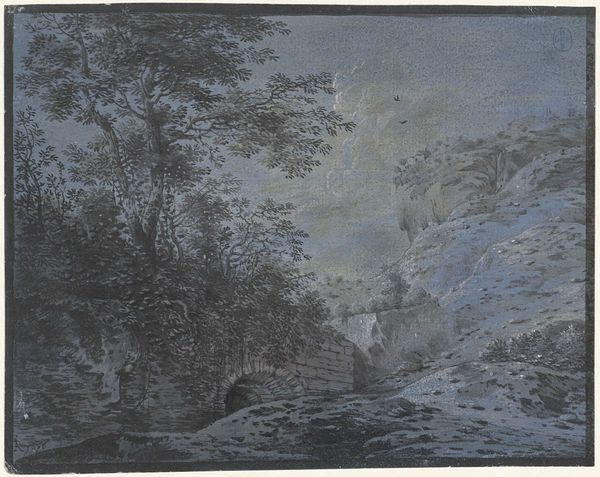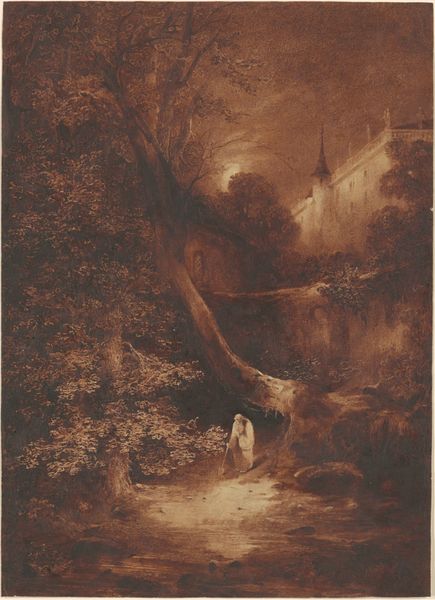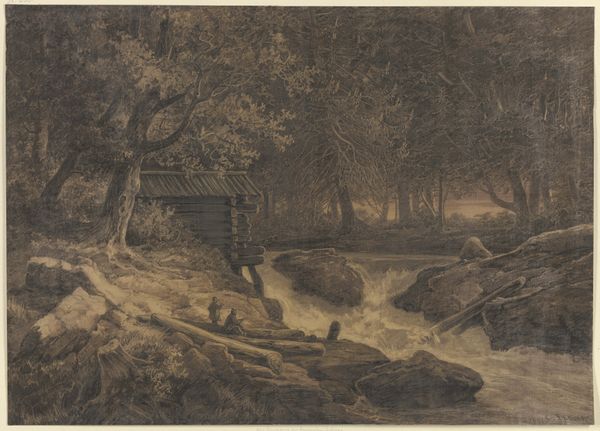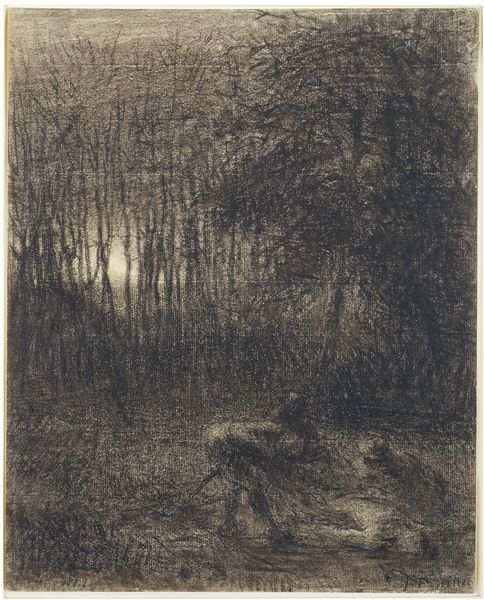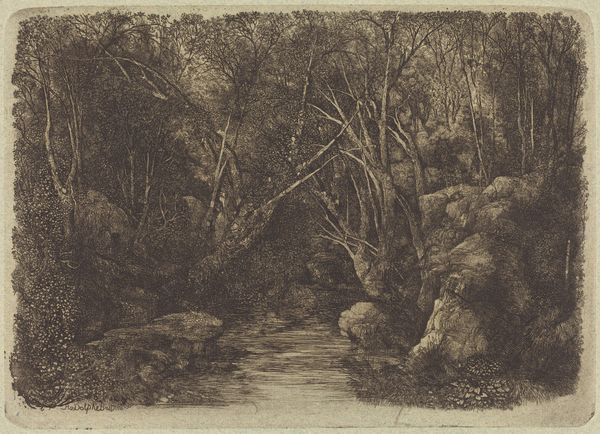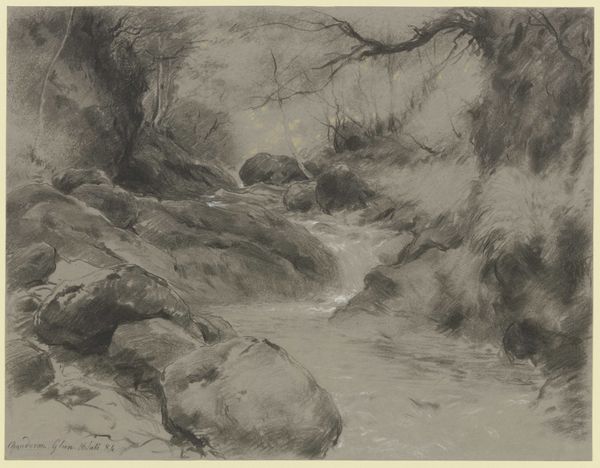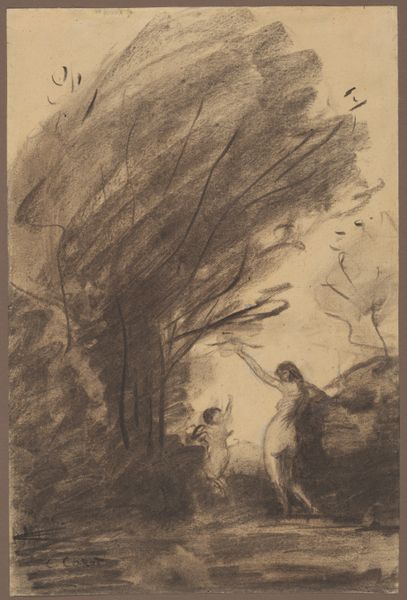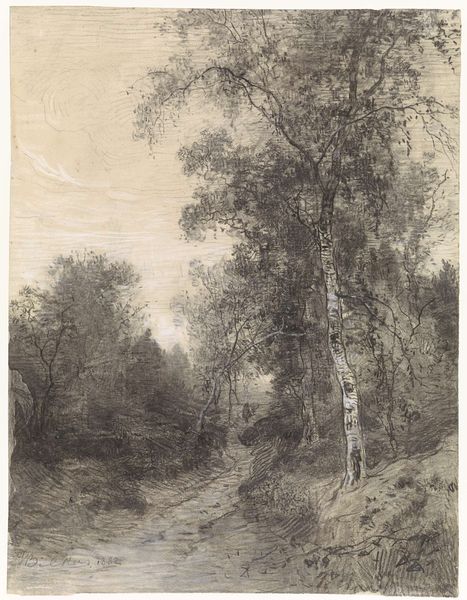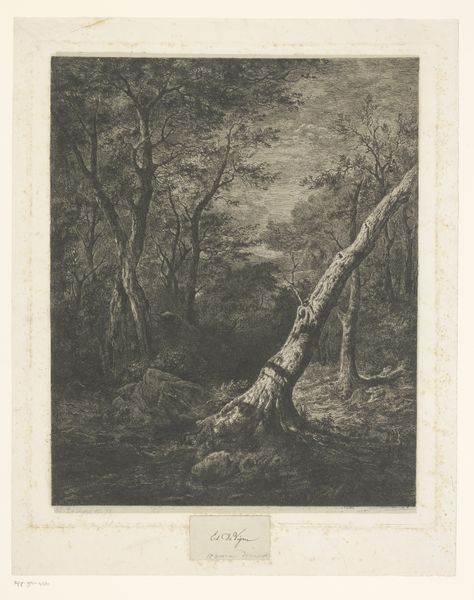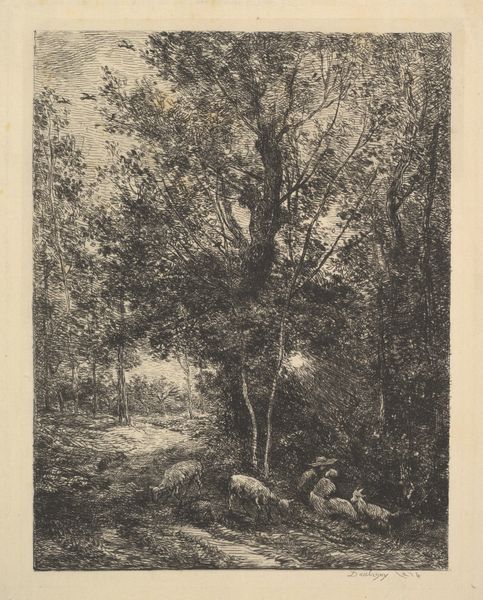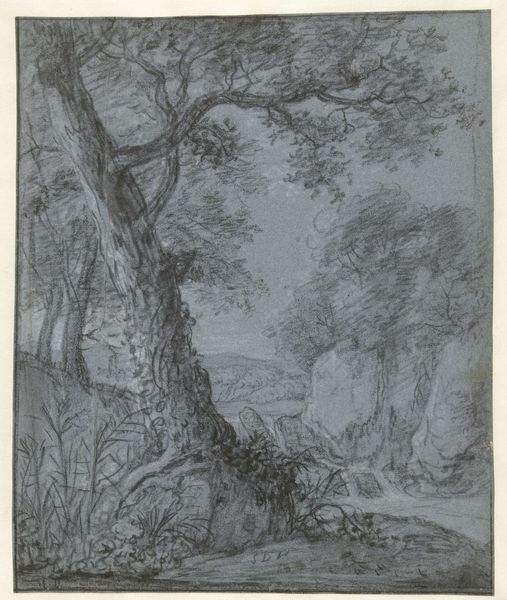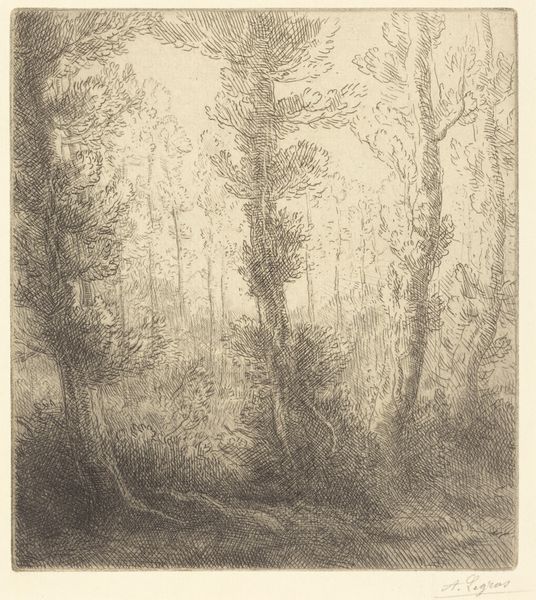
Dimensions: 9 5/16 x 7 3/8 in. (23.6 x 18.7 cm)
Copyright: Public Domain
Curator: A Rider and a Dead Horse in a Landscape, by Gustave Doré, made sometime between 1832 and 1883, primarily in ink, pencil, and graphite. It’s a powerfully bleak image, isn't it? What immediately strikes you? Editor: The stark contrast! The dramatic lightning, the lifeless horse... it's all rendered in these incredible shades of gray, really amplifying the sense of despair. How do you read the composition in relation to that emotional intensity? Curator: Observe the dominating darkness; its saturation across the image plane denies spatial clarity, flattening the scene. The placement of the figures, almost swallowed by the oppressive landscape, further emphasizes their vulnerability and insignificance. It’s almost a study in the sublime, don’t you think? How does Doré use line and form to communicate this? Editor: The lines are frantic and scratchy, especially around the trees and the storm. It's not clean or precise at all; it's all about capturing a raw, untamed feeling, I think. It really contributes to the overall chaos. What’s the effect of the limited tonal range? Curator: The monochrome palette forces us to focus on the tonal variations and textures, and thus, their semiotic weight. Lighter areas—the lightning, the faint highlighting on the horse—gain significant emphasis, highlighting destruction amidst the gloom. Editor: So, without color to distract us, we're pushed to consider line, tone, and form to understand the full extent of meaning. It’s a masterclass in minimalist expression. I didn’t see it like that at first. Curator: Exactly. The power lies not in what is depicted, but how it's depicted, provoking contemplation and discourse surrounding our understanding of art and its emotional language.
Comments
No comments
Be the first to comment and join the conversation on the ultimate creative platform.
